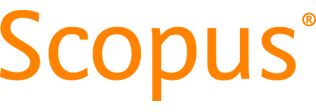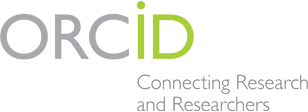-
Article
-
A New Paradigm of Artificial Neural Network Learning for Atmospheric and Oceanic Predictions: Physics-Informed Neural Networks and Operator Learning
대기 및 해양 예측을 위한 인공신경망 학습의 새로운 패러다임: 물리정보 신경망과 연산자 학습
-
Dong-Hoon Kim, Il-Ju Moon
김동훈, 문일주
- This study explores the potential of Physics-Informed Neural Networks (PINNs) and Operator Learning (OL) techniques in advancing scientific computation and prediction. PINNs …
- This study explores the potential of Physics-Informed Neural Networks (PINNs) and Operator Learning (OL) techniques in advancing scientific computation and prediction. PINNs integrate physical principles into neural network training, enabling accurate modeling and prediction of complex physical systems, even in data-scarce and noisy environments. They have been successfully applied to solve challenging nonlinear partial differential equations (PDEs), such as Euler and Navier-Stokes equations, and continue to evolve with variants. Meanwhile, OL methods, represented by Deep Operator Network (DeepONet) and Fourier Neural Operator (FNO), focus on learning mappings between function spaces. These methods excel in high-dimensional data processing and have demonstrated remarkable performance in applications such as global atmospheric modeling with NVIDIA’s FourCastNet. Hybrid approaches, such as Physics-Informed DeepONet (PIDON) and Physics-Informed Neural Operator (PINO), combine the strengths of PINNs and OL. These methods leverage data-driven learning and physical constraints, achieving superior generalization and prediction accuracy. Notably, PINO enables zero-shot super-resolution predictions by integrating multi-resolution data with PDE constraints. While PINNs and OL individually present powerful tools for modeling and prediction, their computational cost and sensitivity to noise pose challenges. Hybrid approaches offer a pathway to address these issues by optimizing their integration through quantitative analyses. Future research directions include accelerating training through high-performance computing, extending applications to multiscale problems, and designing innovative loss functions to enhance data efficiency. This work synthesizes the latest advancements in PINNs, OL, and hybrid methods, providing a new paradigm for precise and efficient scientific computation across diverse fields. - COLLAPSE
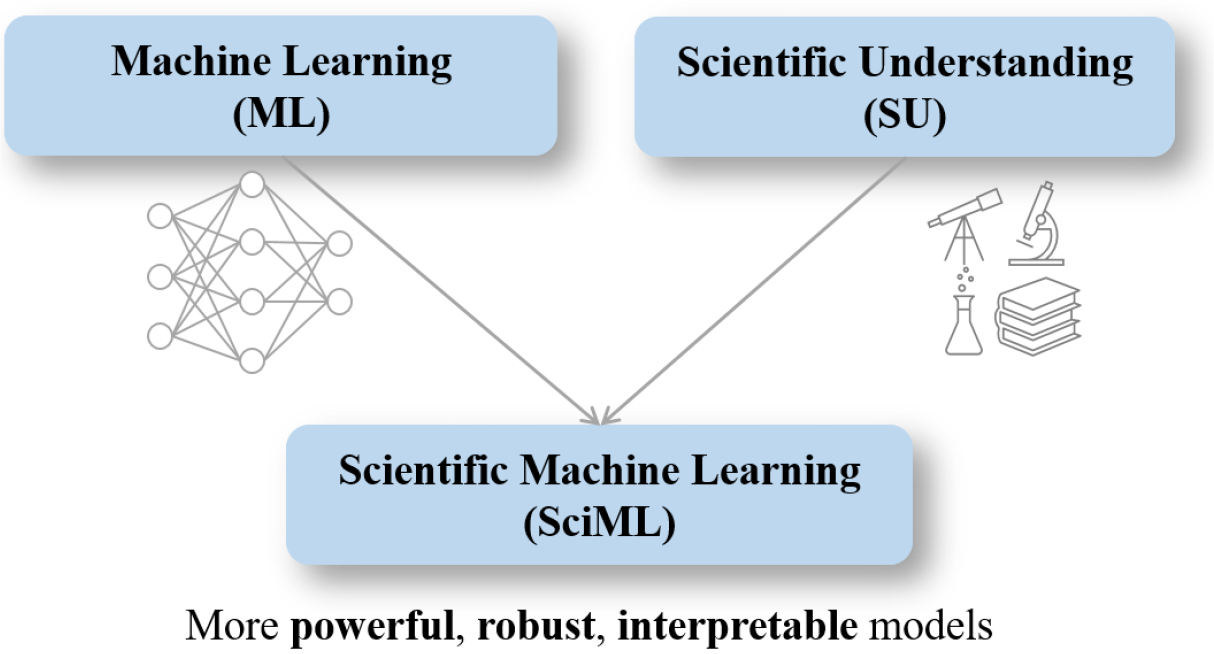
-
A New Paradigm of Artificial Neural Network Learning for Atmospheric and Oceanic Predictions: Physics-Informed Neural Networks and Operator Learning
-
Article
-
Characteristics of Global Sea Level Changes during ENSO periods
ENSO 기간 전 지구 해수면 변화 특징
-
Juhye Kang, Hyeonsoo Cha, Jae-Hong Moon
강주혜, 차현수, 문재홍
- Natural climate variability, such as El Niño and La Niña, can result global sea levels rise or fall over several months, which …
- Natural climate variability, such as El Niño and La Niña, can result global sea levels rise or fall over several months, which leads to rapid sea level changes in coastal areas. Thus, it is very important to identify the causes of sea level fluctuations during the El Niño-Southern Oscillation (ENSO). In this study, Gravity Recovery and Climate Experiment (GRACE) satellites and reanalysis data based on Array for Real-time Geostrophic Oceanography (Argo) from April 2002 to December 2022 were used to identify the characteristics of land mass and ocean density and examine the contribution of each process to Global Mean Sea Level (GMSL) changes during the ENSO period. The results show that the interannual variability of GMSL is highly correlated with ocean mass changes caused by Land Water Storage (LWS), which contributes a larger amount to GMSL than ocean density driven Steric Sea Level (SSL) changes. SSL exhibits significant regional variations, representing the distinct dipole pattern of the tropical Pacific sea levels during the ENSO period. During El Niño period, SSL decreased by about -11 cm in the western tropical Pacific and increased by about 7 cm in the eastern Pacific. In contrast, during La Niña, SSL increased by approximately 10 cm in the tropical western Pacific and decreased by approximately -7 cm in the eastern Pacific. LWS pattern indicated negative anomalies of more than -5 cm in India, eastern China, and northern South America, and positive anomalies of more than ~5 cm in southern China and southeastern South America during El Niño period. During La Niña period, the opposite pattern was observed in these regions. The global LWS and total precipitation showed a high correlation of 0.61 with a lag of 6 months and the land precipitation during the ENSO period exhibited a similar spatial pattern to the LWS. Additionally, we quantified the contribution of LWS to GMSL over the continents. The results showed that Asia has the largest contribution to GMSL rise (39 ± 1.63%) during El Niño, while Africa is the largest contribution to GMSL decrease (53.67 ± 6.13%). - COLLAPSE
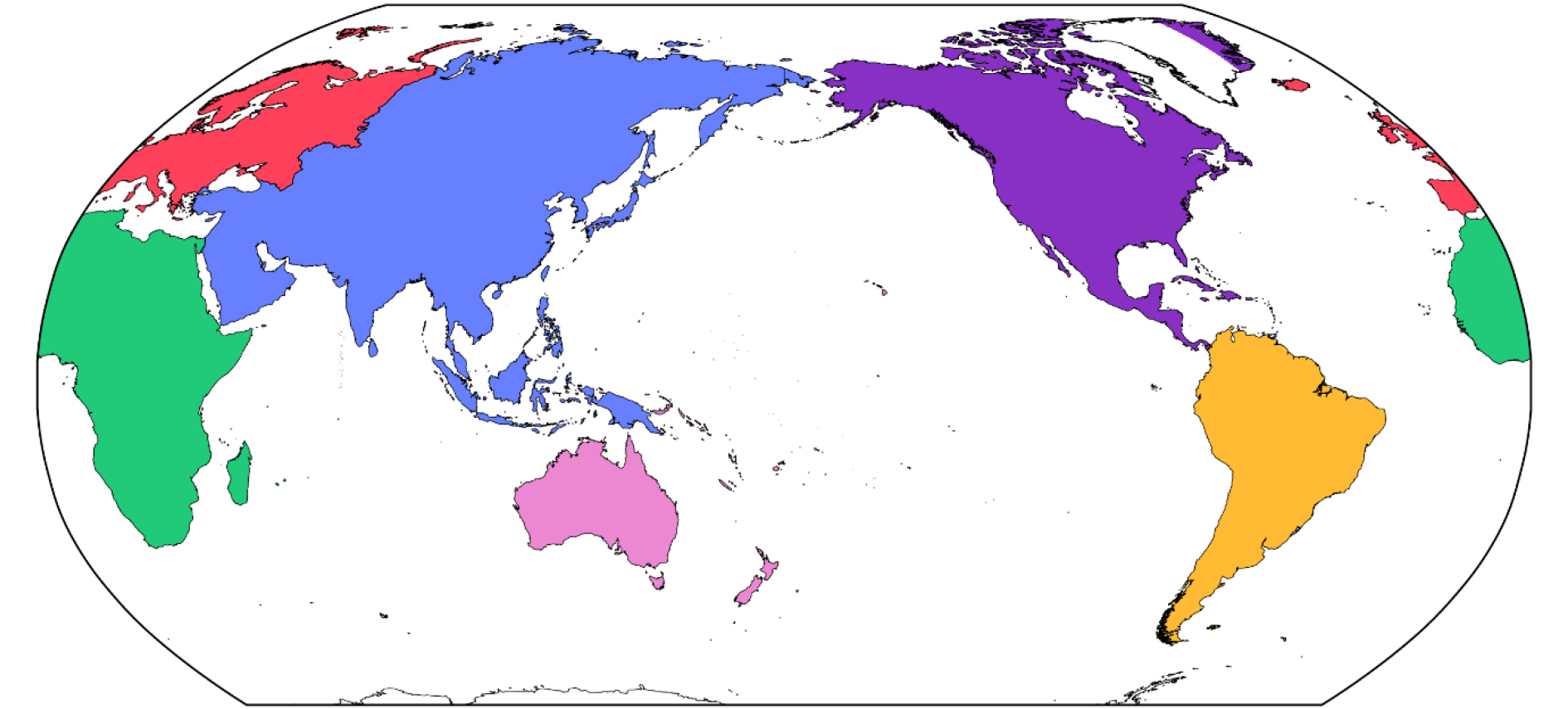
-
Characteristics of Global Sea Level Changes during ENSO periods
-
Article
-
Ongoing South China Sea Dispute: Is it Permitted for Continental States to Establish an Archipelagic Regime in their Outlying Archipelagos?
끝나지 않은 남중국해 분쟁: 대륙국가의 원양군도 체제는 인정될 수 있는가?
-
Minchul Kim, Hee Cheol Yang
김민철, 양희철
- This article explores the controversies between the United States (US) and China regarding the renewed attention given to China’s claims for an …
- This article explores the controversies between the United States (US) and China regarding the renewed attention given to China’s claims for an archipelagic regime encompassing four groups of islands in the South China Sea, following the 2016 arbitral award. It examines whether continental States, rather than archipelagic States, can establish straight baselines enclosing their outlying archipelagos in light of the United Nations Convention on the Law of the Sea (UNCLOS) and contemporary State practice. Following the 2016 South China Sea award, this issue became a key point of sharp debate between the US and China, particularly regarding China’s attempts to justify its claims to maritime jurisdiction within the nine-dash line. Although the claims of continental States for an archipelagic regime were not accepted during the Third United Nations Conference on the Law of the Sea, it cannot be definitively concluded that the practice of continental States establishing straight baselines around their outlying archipelagos is entirely precluded from evolving into customary international law. However, considering current State practice, it is difficult to argue that the recognition of an archipelagic regime for outlying archipelagos by continental States has met the requirements for the formation of a part of customary international law. - COLLAPSE
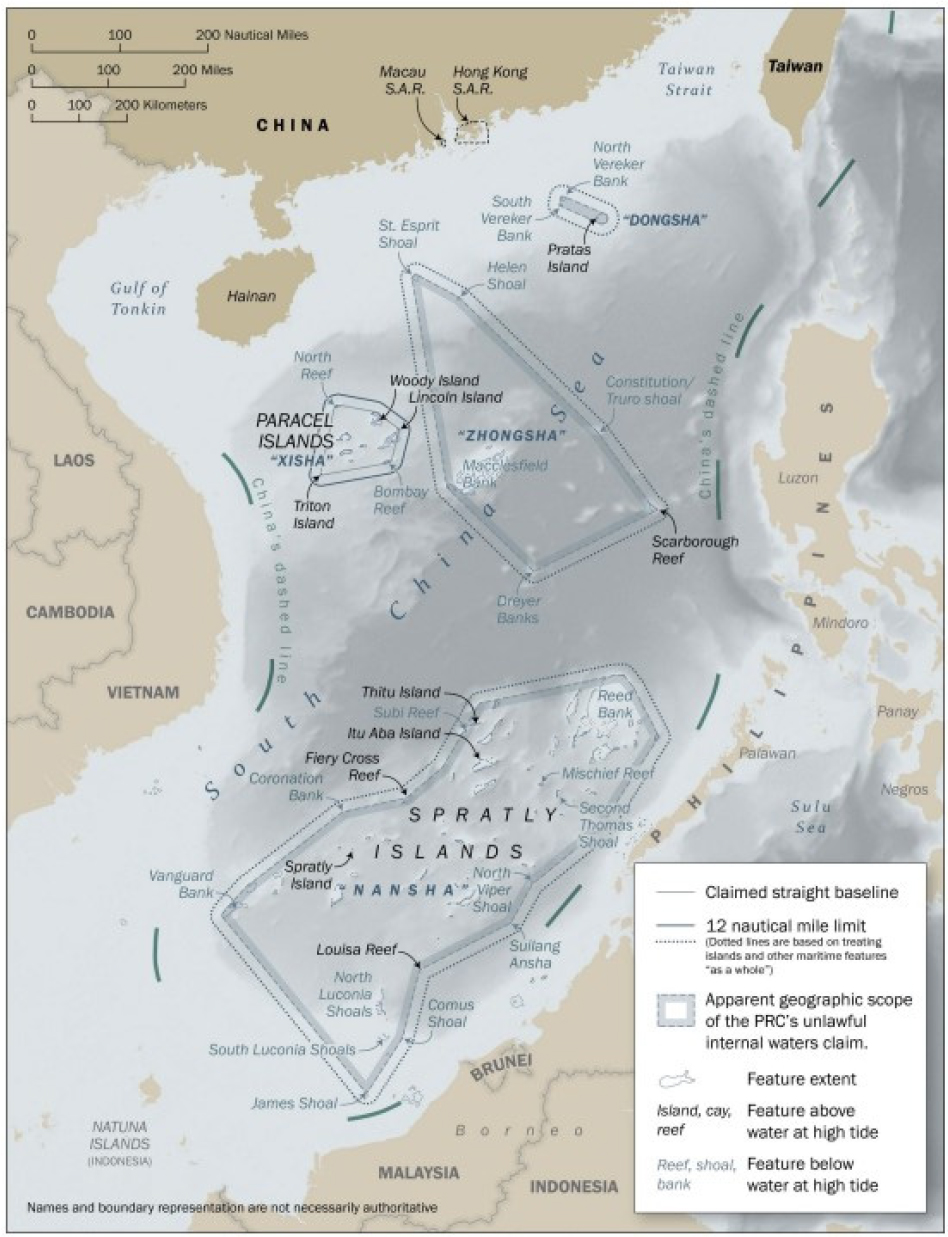
-
Ongoing South China Sea Dispute: Is it Permitted for Continental States to Establish an Archipelagic Regime in their Outlying Archipelagos?
-
Note
-
Short-term Variation Analysis on the Time-series Dissolved Oxygen Data Using the Variance Measures of the Time-difference Variables
시간차분 변수의 분산측도를 이용한 시계열 용존산소 자료의 단기 변동 분석
-
TaeKyun Kim, HongYeon Cho, GiSeop Lee
김태균, 조홍연, 이기섭
- This study presents a method for analyzing short-term fluctuations in time-series (TS) data, which is essential for ocean monitoring. The proposed approach …
- This study presents a method for analyzing short-term fluctuations in time-series (TS) data, which is essential for ocean monitoring. The proposed approach utilizes statistical measures from time-differenced variables defined across various time lags, linking the standard deviation (SD) with the autocorrelation function (ACF). This connection facilitates the exploration of variability and stationarity. Focusing on variations over a 7-day period, this method is applied to dissolved oxygen concentration data collected from the marine water quality monitoring network at the Nakdong Myeongji and Eulsuk stations, provided by the Korea Marine Environment Management Corporation (KOEM). The findings suggest that the standard deviation of differenced variables exhibits fluctuation patterns consistent with those predicted by the autocorrelation theory. Rapid increases are observed within a time frame of less than 6 hours, followed by gradual changes over longer time scales. Additionally, a periodic decline is noted after approximately 12 hours on a daily scale, indicating cyclic fluctuations within the daily cycle. In conjunction with the standard deviation, robust dispersion measures are introduced to highlight the differences, with a specific emphasis on the median absolute deviation to evaluate the normality of ocean observation data. Consequently, the proposed technique serves as a valuable quantitative analytical tool for assessing diurnal variability in dissolved oxygen concentrations and for testing the assumptions of stationarity and normality in time series data. - COLLAPSE
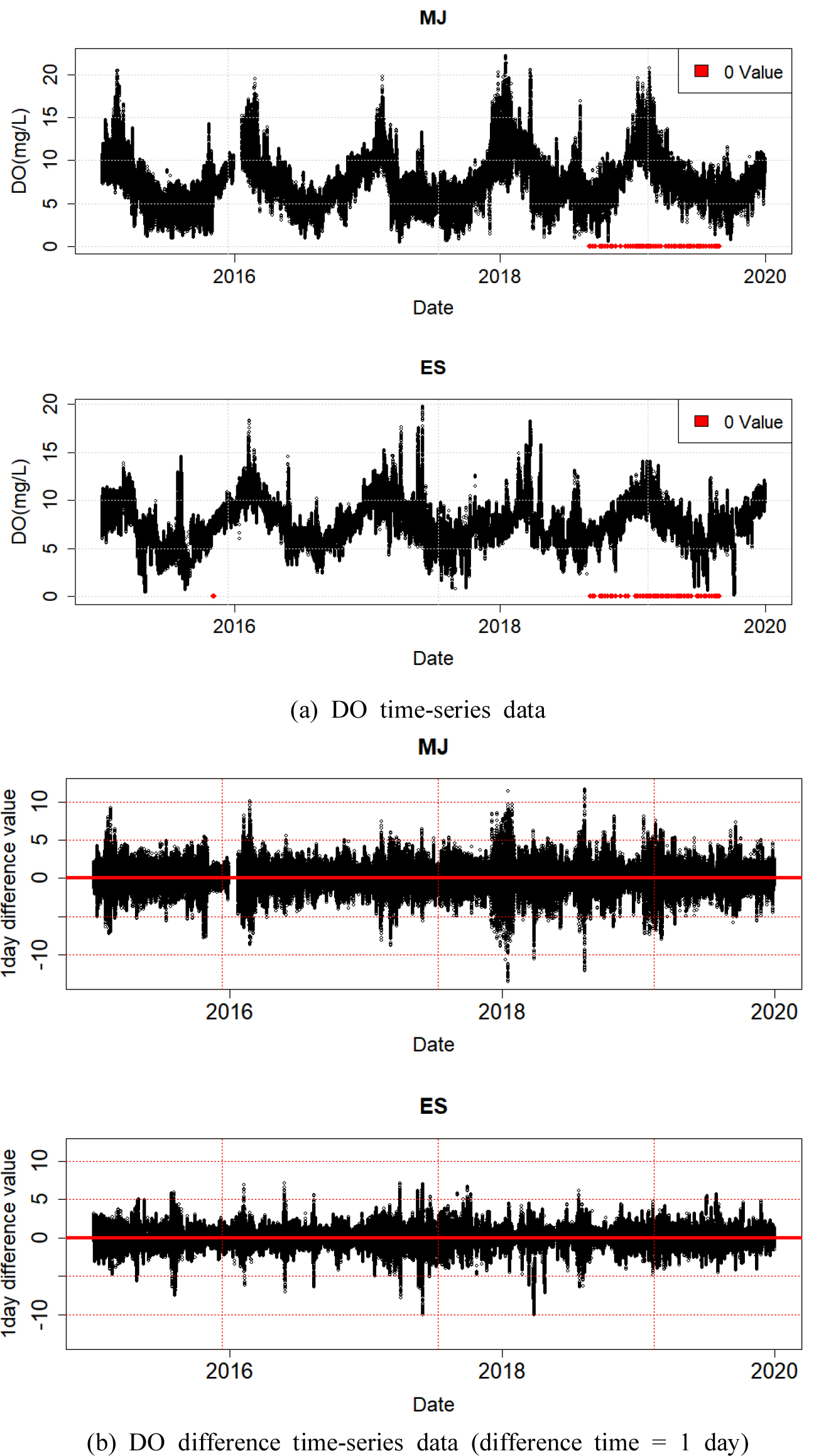
-
Short-term Variation Analysis on the Time-series Dissolved Oxygen Data Using the Variance Measures of the Time-difference Variables
-
Article
-
Improving High-Frequency Ocean Radar Data Quality through FOL Optimization
FOL 최적화를 통한 고주파 해양레이더 자료 품질 개선
-
Seungho Lee, Jae Yeob Kim, Hyuk-Man Cho, Se Young Park
이승호, 김재엽, 조혁만, 박세영
- The process of detecting and distinguishing the first-order peak (representing ocean currents) and the second-order peak (representing waves) in the Doppler spectrum …
- The process of detecting and distinguishing the first-order peak (representing ocean currents) and the second-order peak (representing waves) in the Doppler spectrum received by HF-Radar systems is referred to as First Order Line (FOL) separation. Accurate identification of the null point between these peaks is crucial for precise current velocity estimation. This study reprocessed radial velocity data using optimized FOL parameters and evaluated the quality improvement by comparing the results with drifter buoy velocity data. The experimental results showed that the optimal FOL parameters varied across different observation stations. However, overall improvements were observed, with increased correlation coefficients and reduced root mean square errors. Additionally, the data coverage area expanded, leading to improved data collection rates. In conclusion, this study demonstrates that optimizing FOL parameters in HF-Radar systems significantly enhances the accuracy and quality of radial velocity data. By adjusting FOL parameters to account for the propagation environment and regional characteristics of each observation station, the reliability and precision of current velocity data can be improved. This suggests a practical approach to broad-scale quality enhancement of HF-Radar data. - COLLAPSE
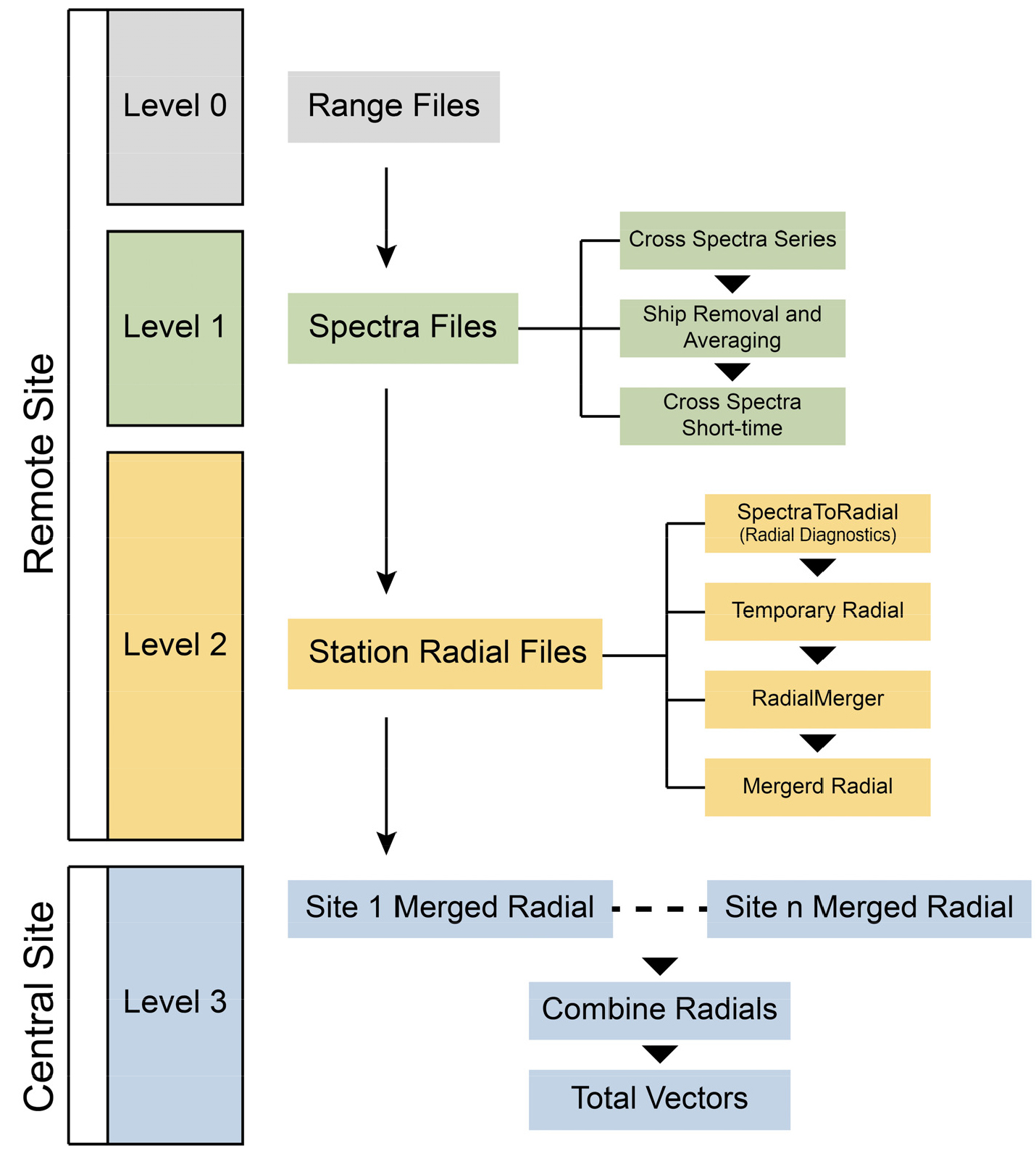
-
Improving High-Frequency Ocean Radar Data Quality through FOL Optimization
-
Article
-
Challenges to the Antarctic Treaty System in the Era of Climate Crisis and Hegemonic Competition: Korea's Role
기후 위기와 패권 경쟁 시대, 남극조약 체제에 대한 도전과 한국의 역할
-
Ji Hee Kim, Jeong-Hoon Kim, Won-Sang Seo
김지희, 김정훈, 서원상
- The Antarctic Treaty System (ATS) has evolved over the past 60 years, beginning with the Antarctic Treaty itself, overcoming various internal and …
- The Antarctic Treaty System (ATS) has evolved over the past 60 years, beginning with the Antarctic Treaty itself, overcoming various internal and external challenges. However, since the Protocol on Environmental Protection came into effect, the adoption of binding environmental protection measures has been significantly delayed, raising concerns and distrust regarding the governance capacity of the ATS. Amid the global climate crisis, the delay in urgent environmental protection measures for safeguarding the Antarctic environment can be attributed to certain consultative parties exercising their veto power annually. This is rooted in the U.S.-China global rivalry extending to Antarctica, conflicts among consultative parties within the system, and different views held by countries like China and Russia on protection proposals by claimant states whose territorial claims were frozen under the Antarctic Treaty. These factors are destabilizing the foundations of the ATS, heightening fears that the treaty may disband due to external pressures and internal conflicts. In the Ross Sea, where the Republic of Korea's Jang Bogo Station, the United States' McMurdo Station, New Zealand's Scott Base, and Italy's Mario Zucchelli Station are already operational, China established its fifth Antarctic station earlier this year. This development has transformed the Ross Sea into a strategic geopolitical hotspot for competing global powers. With the global climate crisis and China's increasing presence intensifying the region, Korea, which has expanded its Antarctic activities, now faces a critical juncture to reflect on its strategic direction for Antarctic activities that serve both national interests and the advancement of the ATS. - COLLAPSE
-
Challenges to the Antarctic Treaty System in the Era of Climate Crisis and Hegemonic Competition: Korea's Role
-
Article
-
Distribution of 137Cs in the East Sea and Coastal Water off Southern Korea Peninsula in 2024
2024년 동해와 남해 연안역 해수 중 137Cs 분포
-
Jaeeun Lee, Jihye Shin, Hyunmi Lee, Intae Kim
이재은, 신지혜, 이현미, 김인태
- This study investigates the vertical and horizontal distribution of the artificial radionuclide, cesium- 137 (137Cs, half–life: 30.17 year), in seawater …
- This study investigates the vertical and horizontal distribution of the artificial radionuclide, cesium- 137 (137Cs, half–life: 30.17 year), in seawater of the Korean seas (the East Sea and the coastal water off southern part of Korean Peninsula) immediately after the Fukushima wastewater release in 2024. In the East Sea surface, 137Cs activities ranged from 0.88–1.55 mBq kg-1 (average: 1.19 ± 0.27 mBq kg-1, n = 8). The activity was highest at the surface and decreased with depth, reaching values below the minimum detectable activity (MDA) < 0.27 mBq kg-1, < 0.27 mBq kg-1 at depths > 2,000 m. 137Cs activities in the surface off southern Korean sea, ranged from 1.38–2.24 mBq kg-1 (average: 1.68 ± 0.34 mBq kg-1, n = 5), with slightly higher activities in the surface compared to those in deeper water. The temporal variation in 137Cs activities in both regions showed an overall exponential decrease of 137Cs since the 2000s, except for the few years after the Fukushima accident (in March 2011). Based on this trend, effective environmental residence time () of 137Cs in the mixed layer depth of the East Sea was estimated to be 20.5 ± 6.6 years. The oceanic residence time () was calculated to be 64.0 ± 0.8 years. According to the 137Cs mass balance in the East Sea (based on the balance between atmospheric input and vertical mixing), the downward flux of 137Cs from mixed layer to the deep–water (1,350–2,000 m) were calculated to be 1.87–1.89 Bq m-2 yr-1 with oceanic residence time of 50.0–50.6 yrs. - COLLAPSE
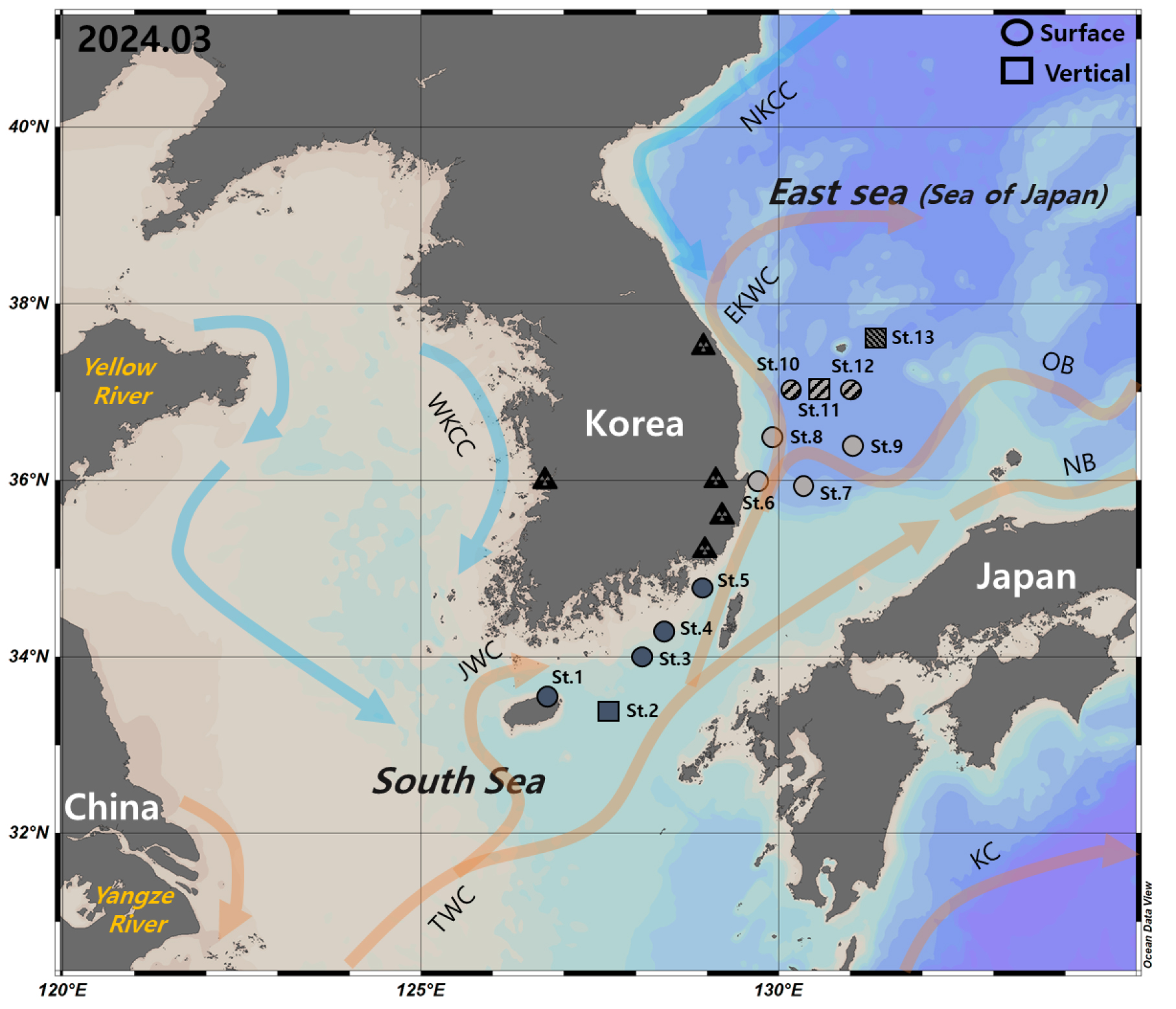
-
Distribution of 137Cs in the East Sea and Coastal Water off Southern Korea Peninsula in 2024
-
Article
-
Comparison of the Benthic Ecological Quality Assessments Based on the Polychaete Communities on the Coast of Ulsan, the East Sea, Korea
한국 동해 울산 연안의 다모류군집 기반 저서생태계 건강도 평가 결과 비교
-
Sung Wan Park, Hyun Chool Shin
박성완, 신현출
- Assessing the marine environment involves evaluating water quality, sediment, and organisms. Various benthic health indices have been developed both domestically and internationally …
- Assessing the marine environment involves evaluating water quality, sediment, and organisms. Various benthic health indices have been developed both domestically and internationally based on benthic communities. This study evaluated the ecological quality (EcoQ) of the Ulsan coast, East Sea of Korea, using BPI and BHI (developed in Korea), as well as AMBI, M-AMBI, EQR, and B-IBI (developed overseas). Analysis of seasonal survey data revealed little variation in assessment grades between seasons, but notable differences among indices. BPI, BHI, and AMBI assessed the study area as being in relatively good condition, whereas M-AMBI and EQR indicated relatively poor conditions. While AMBI did not clearly distinguish ecological quality levels, M-AMBI provided more detailed and differentiated classifications. Kendall's rank correlation and regression analysis revealed strong correlations among AMBI, M-AMBI, and EQR, whereas other indices showed weaker correlations. These differences are attributed to variations in calculation methods, classification of species into functional groups, and the inherent characteristics of each ecological health index. Therefore, careful selection of assessment indices, along with the combined use of multiple indices for complementary evaluation, is recommended. Specifically, it may be necessary to apply indices that serve both general ecological assessment and early warning purposes. For the Ulsan coast, BHI (universal evaluation) and EQR (warning evaluation) are recommended for evaluating the benthic environment. - COLLAPSE
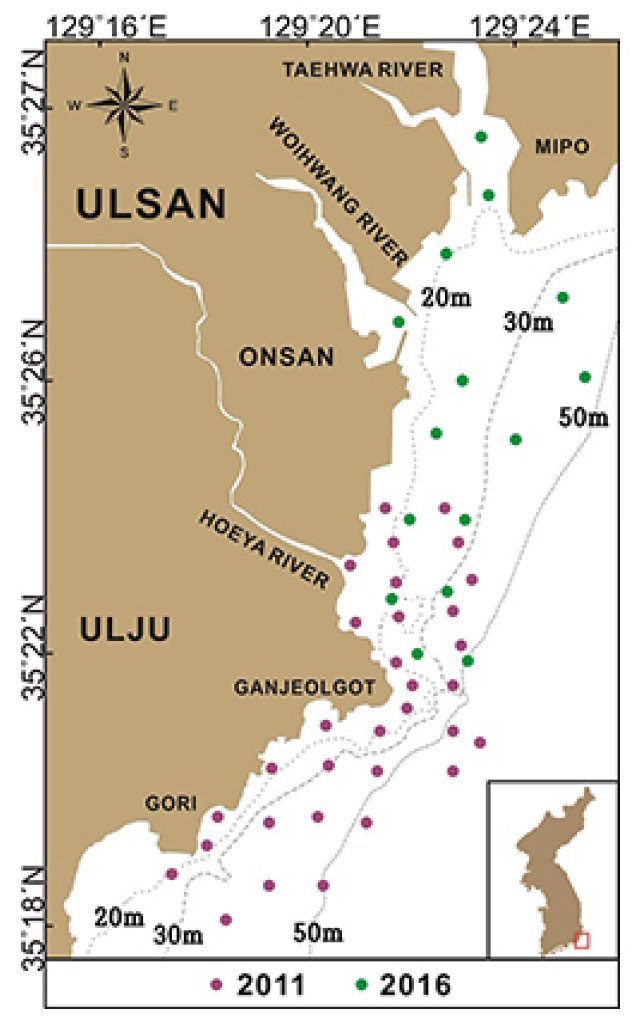
-
Comparison of the Benthic Ecological Quality Assessments Based on the Polychaete Communities on the Coast of Ulsan, the East Sea, Korea
-
Article
-
Preference Differences Between Development and Conservation in Regional Projects: A Comparative Study of Local Residents and the General Public Regarding the Saemangeum Development Project
지역 개발사업을 둘러싼 개발과 보전에 대한 선호 비교: 새만금 개발사업에 대한 지역주민과 일반국민 간 인식을 중심으로
-
Namhee Kim, Jungho Nam, Chi-Ok Oh
김남희, 남정호, 오치옥
- Most environmental conflicts are caused by competing interests between development and conservation. The Saemangeum development project has also been highly controversial due …
- Most environmental conflicts are caused by competing interests between development and conservation. The Saemangeum development project has also been highly controversial due to the conflicting values of development and conservation, and the direction of the project has been constantly changing due to conflicting interests among stakeholders. This study employed choice experiments to evaluate preferences regarding the main components of the Saemangeum development project (industrial, renewable energy, and ecological sites, and so on) and aims to identify a viable consensus for the project's direction. The survey included 500 local residents and 1,000 non-residents of the Saemangeum area, utilizing a mixed logit model to estimate preferences and marginal willingness to pay. Results revealed that local residents favored development features, particularly the construction of an international airport, while non-residents showed stronger preference for environmental conservation elements such as renewable energy and ecological sites. Scenario analysis further confirmed this divide, with residents preferring development-oriented scenarios and non-residents favoring environmental conservation approaches. These results suggest the need to consider the perspectives of various stakeholders in the process of development projects, the need to develop a plan to mutually understand the interests of each stakeholder, and the need to actively invest in renewable energy and ecological land. - COLLAPSE

-
Preference Differences Between Development and Conservation in Regional Projects: A Comparative Study of Local Residents and the General Public Regarding the Saemangeum Development Project
-
Article
- Functional Metagenomic Insights into Antibiotic Resistance Genes from the Uppermost Layer of the East Sea, Korea
- Gwang Il Jang
- The issue of antibiotic resistance (AR) has become critically important. As the use of antibiotics increases, bacteria develop resistance mechanisms that allow …
- The issue of antibiotic resistance (AR) has become critically important. As the use of antibiotics increases, bacteria develop resistance mechanisms that allow them to survive in antibiotic-contaminated environments. The functional metagenomic approach is more effective than culture-dependent methods, PCR, and sequencing in discovering novel AR genes and resistance mechanisms. In the East Sea, various antibiotic resistance (AR) genes conferring resistance to ampicillin, fosfomycin, polymyxin B and rifampicin were identified. Among these antibiotics, the majority of the cloned resistance genes conferred resistance to ampicillin (55.9%), followed by polymyxin B (23.5%), fosfomycin (11.8%), and rifampicin (8.8%). The host organisms inferred from the annotated AR genes were primarily marine bacterial taxa. - COLLAPSE
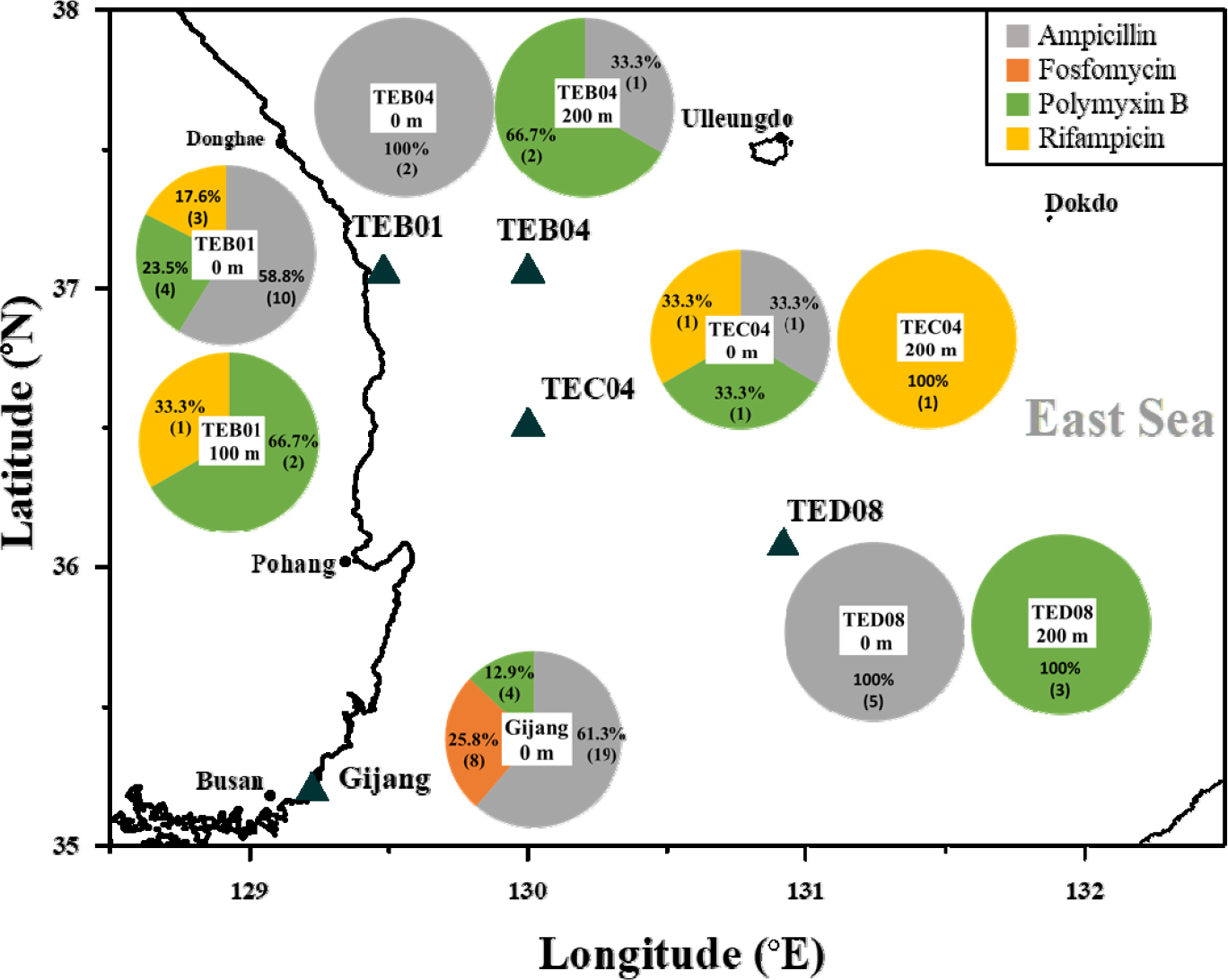
-
Article
-
Numerical Simulation of Ocean-Ice Shelf Interaction in the Ross Sea, Antarctica: Seasonal Variability of Dense Shelf Water and its Controlling Factors
로스해 해양-빙붕 상호작용을 고려한 수치 모의: 고밀도 대륙붕수의 계절변동 특성과 조절 요인
-
Sung-Ho Choo, Taekyun Kim, Jae-Hong Moon, Emilia Kyung Jin, Daehyuk Kim
추성호, 김태균, 문재홍, 진경, 김대혁
- The Ross Sea continental shelf plays a crucial role in ocean circulation and climate regulation by forming Dense Shelf Water (DSW), which …
- The Ross Sea continental shelf plays a crucial role in ocean circulation and climate regulation by forming Dense Shelf Water (DSW), which contributes to the production of Antarctic Bottom Water (AABW) that ventilates the abyssal Pacific. DSW primarily composed of High Salinity Shelf Water (HSSW), formed through brine release during sea ice formation in coastal polynyas, with additional contributions from mixing with Ice Shelf Water (ISW) originating from basal meltwater beneath ice shelves. The export of AABW from the Ross Sea shelf is compensated by the import of lighter water masses from adjacent regions. Consequently, the characteristics of shelf waters are highly sensitive to these transports, which serve as an effective regulator of shelf water salinity. In this study, we developed a three-dimensional ocean circulation model that incorporates sea ice processes and physical interactions at the ocean-ice shelf interface. This system successfully reproduces the formation and circulation of the major water masses in the Ross Sea, as well as the export of AABW toward the Pacific basin. Using model results, the seasonal variability of DSW volume and underlying processes driving the changes were investigated. Despite active sea ice formation throughout the austral autumn and winter, which supplies HSSW, the volume of DSW decreases during autumn before increasing rapidly in winter. This seasonal contrast is attributed to the strengthening of westward currents in autumn, which enhances the inflow of fresher water from the Amundsen Sea and the export of AABW, ultimately reducing the proportion of dense water masses on the shelf. During winter, as these transport processes weaken, the persistent brine release from active sea ice formation in coastal polynyas leads to an increase in the volume of DSW. - COLLAPSE

-
Numerical Simulation of Ocean-Ice Shelf Interaction in the Ross Sea, Antarctica: Seasonal Variability of Dense Shelf Water and its Controlling Factors
-
Article
-
Temperature, pH, and Salinity as Combined Environmental Factors Affecting the Early Life Stages of Three Large Brown Algae
수온, pH 및 염분의 조합된 환경인자가 대형 갈조류 3종의 초기 생활사에 미치는 영향
-
Sung Jin Yoon
윤성진
- In this study, a marine ecological toxicity assessment was conducted to evaluate the combined effects of water temperature, pH, and salinity on …
- In this study, a marine ecological toxicity assessment was conducted to evaluate the combined effects of water temperature, pH, and salinity on the early life cycle of large brown alga Undaria pinnatifida, Undariopsis peterseniana, and Ecklonia bicyclis. The results showed the germination rate of zoospores observed to pH and salinity for 72 hours revealed a clear linear concentration-response relationship in the range of 10.0–20.0°C. Germination rates of U. pinnatifida, U. peterseniana, and E. bicyclis decreased rapidly at pH 4.5 to 5.0 and salinity levels of 10.0 to 15.0 psu. The 72h-EC50 values for exposure substance were analyzed in the range of pH 4.4–4.7 and 11.6–16.7 psu. Sensitivity was highest in U. peterseniana regardless of water temperature, while U. pinnatifida and E. bicyclis showed no significant difference among the conditions. In conclusion, the environmental stress and tolerance of three large brown algal species at pH or salinity can potentially be increased or decreased by combined changes in seawater temperature, pH, and salinity, and are interpreted to differ depending on the species and life cycle stage of the seaweed. The findings of this study provided useful data for predicting eco-physiological changes in seaweed due to climate change, ocean acidification, and barren grounds. - COLLAPSE
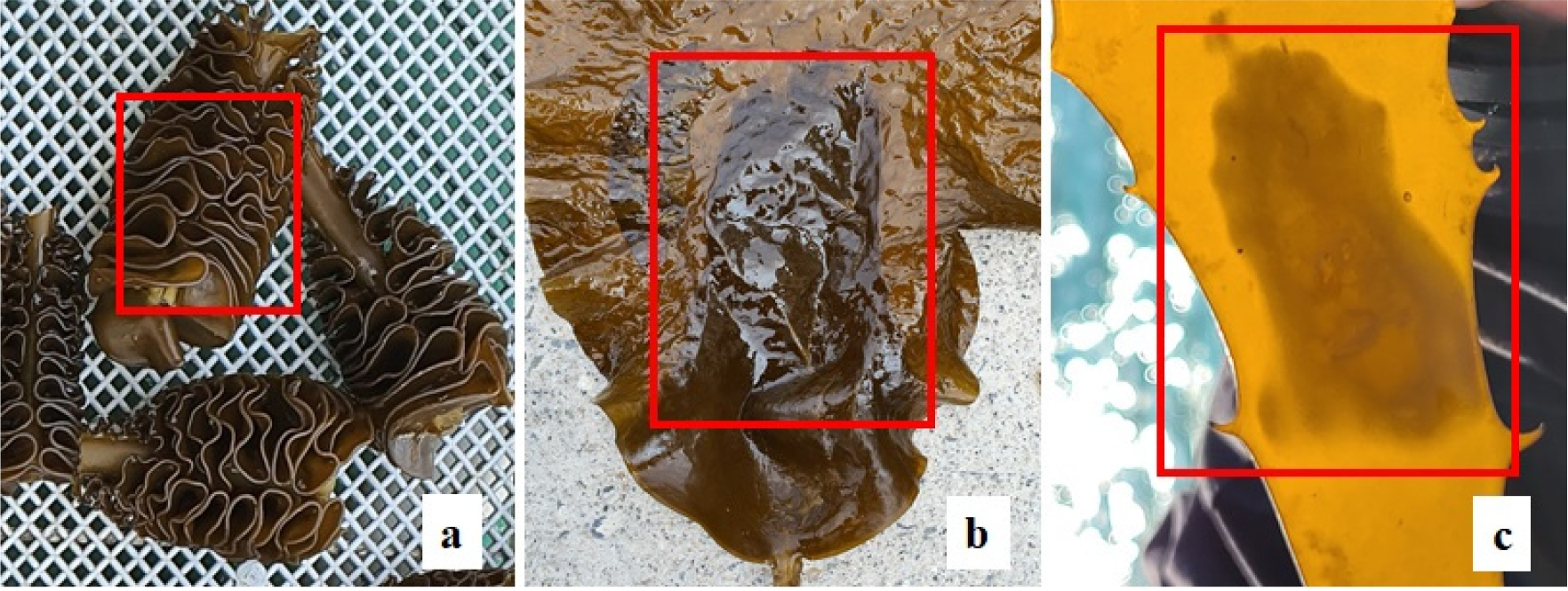
-
Temperature, pH, and Salinity as Combined Environmental Factors Affecting the Early Life Stages of Three Large Brown Algae
-
Article
-
Sea Surface Temperature Variability in a Multi-Millennial Control Simulation with the Kiel Climate Model
킬 기후모델 수천 년 적분 기준 실험의 해수면온도의 변동성
-
Wonsun Park
박원선
- The paper presents the internal climate variability simulated in a 5,000-year-long preindustrial control run with the Kiel Climate Model (KCM). The focus …
- The paper presents the internal climate variability simulated in a 5,000-year-long preindustrial control run with the Kiel Climate Model (KCM). The focus is on sea surface temperature (SST), as it links the ocean, atmosphere, and sea ice, making it an efficient indicator of the variability. The climate model has a particularly high resolution in the ocean model, at 0.5 degrees globally. The total SST variability obtained from the annual mean is quantified, as are the relative ratios of the decadal and centennial variability to the total variability. The SST shows rich variability, of which interannual variability is important in the tropical Pacific, decadal to multi-decadal variability in the western boundary currents, and centennial variability in high latitudes. The simulation shows particularly strong centennial variability with spectral energy concentrated at 80–100 years. This signal is centered in the Southern Ocean and affects global teleconnection, particularly in the tropics. - COLLAPSE
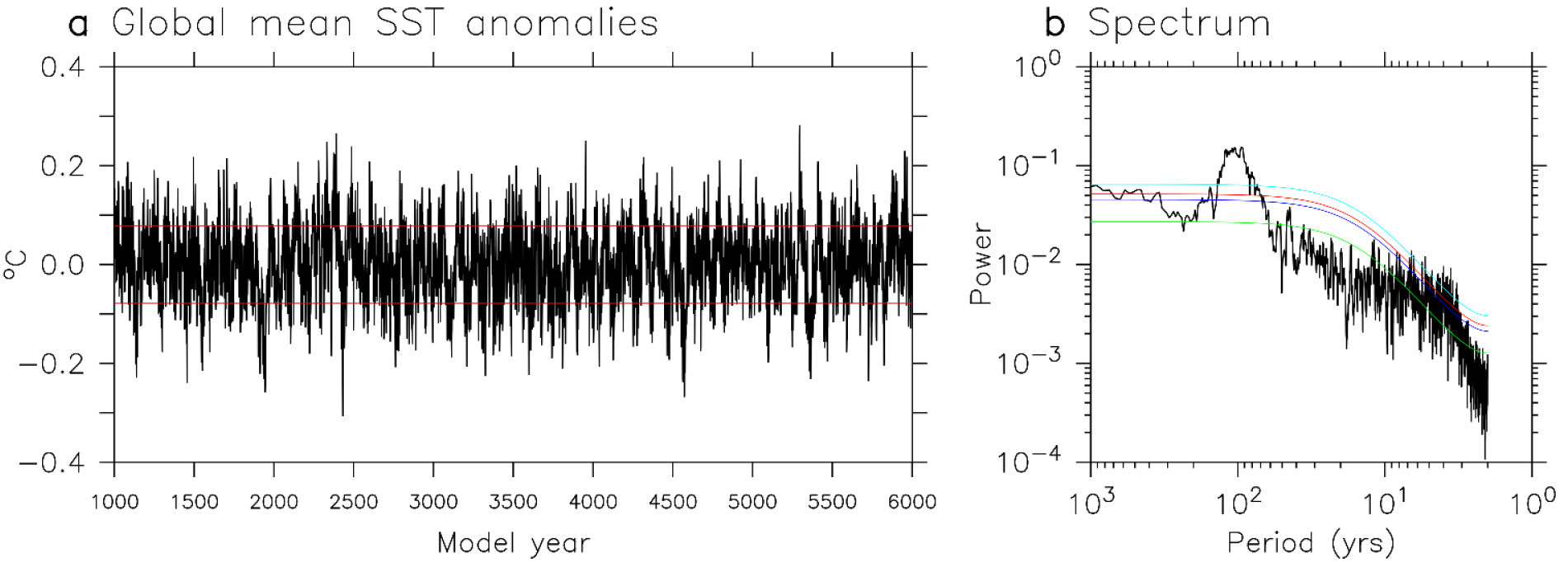
-
Sea Surface Temperature Variability in a Multi-Millennial Control Simulation with the Kiel Climate Model
-
Article
-
Distributions of Dissolved Organic Matter and Nutrients in Spring Waters along Jeju Island’s coast
제주 연안 용천수의 용존유기물 및 영양염의 분포 특성
-
Byung-Chan Song, Jeonghyun Kim
송병찬, 김정현
- This study systematically investigated the nutrients and optical characteristics of dissolved organic matter (DOM) in 16 coastal spring waters distributed around Jeju …
- This study systematically investigated the nutrients and optical characteristics of dissolved organic matter (DOM) in 16 coastal spring waters distributed around Jeju Island. Significant spatial differences in water quality were observed, primarily reflecting regional geological settings, groundwater residence time, and anthropogenic activities such as fertilizer application. Notably high concentrations of nitrate were found in western sites, indicating strong influences from agricultural nitrogen loading. An optical analyses of both chromophoric (CDOM) and fluorescent DOM (FDOM), including optical indices, revealed that humic-like terrestrially derived DOM dominated most springs, while microbially-derived and protein-like DOM were also prominent in some locations. Principal component analysis (PCA) indicated that the variation in DOM and nutrient composition was governed by a combination of natural and anthropogenic factors. The findings highlight marked spatial heterogeneity in chemical and optical DOM properties and nitrogen pollution status among Jeju’s spring waters. This research provides an important scientific basis for the conservation of coastal water quality and a biogeochemical understanding of groundwater-coastal system interactions in a volcanic island context. - COLLAPSE
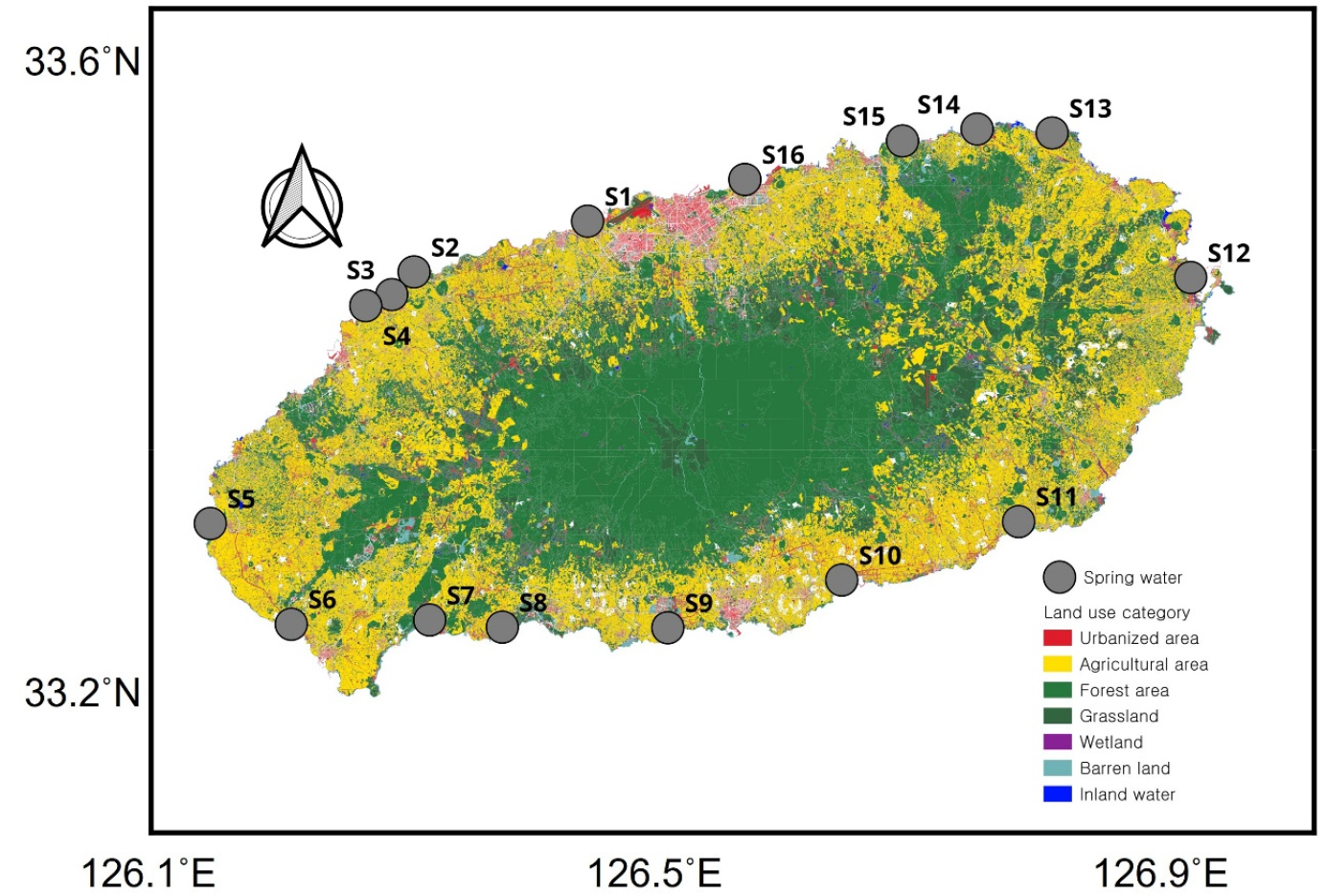
-
Distributions of Dissolved Organic Matter and Nutrients in Spring Waters along Jeju Island’s coast
-
Article
-
The Role of Urea as a Key Nitrogen Source Driving Phytoplankton Blooms in the Nitrogen-Limited South Coast of Korea
질소 제한 환경인 한국 남해안에서 식물플랑크톤 대발생을 유도하는 주요 질소원으로서 요소의 역할
-
Yeonju Kim, Tae-Hoon Kim
김연주, 김태훈
- This study investigates the role of urea as an alternative nitrogen (N) source for phytoplankton and its potential to create conditions conducive …
- This study investigates the role of urea as an alternative nitrogen (N) source for phytoplankton and its potential to create conditions conducive to harmful algal blooms (HABs) in the N-limited coastal ecosystems of the South Coast of Korea. Three cruises were conducted during the 2023 summer monsoon to analyze spatio-temporal nutrient dynamics. The study area exhibited N-limited conditions, with a mean dissolved inorganic nitrogen (DIN) to dissolved inorganic phosphate (DIP) ratio of 11.2, a value lower than the Redfield ratio. Following intense rainfall, urea concentrations increased significantly, and the ratio of urea to dissolved organic nitrogen (DON) consistently exceeded the accepted bioavailability threshold. This indicates that urea represents a readily available fraction of the large DON pool. Statistical analysis linked this urea pulse to the creation of biogeochemical conditions known to favor HABs (ANOVA, p < 0.05). Principal Component Analysis (PCA) identified urea and DIN loading as the primary driver shifting the ecosystem state towards conditions favorable for bloom initiation. Following the nutrient pulse in July, a significant increase in phytoplankton-derived organic matter in August was confirmed by a positive correlation between dissolved organic carbon (DOC) and protein-like fluorescent DOM. These findings suggest that large-scale urea input, supplied by terrestrial runoff, acts as a key triggering mechanism that creates the prerequisite conditions for the recurrent summer phytoplankton blooms in this N-limited system. The study concludes that urea should be included in nutrient monitoring and management strategies to mitigate HAB risk. - COLLAPSE
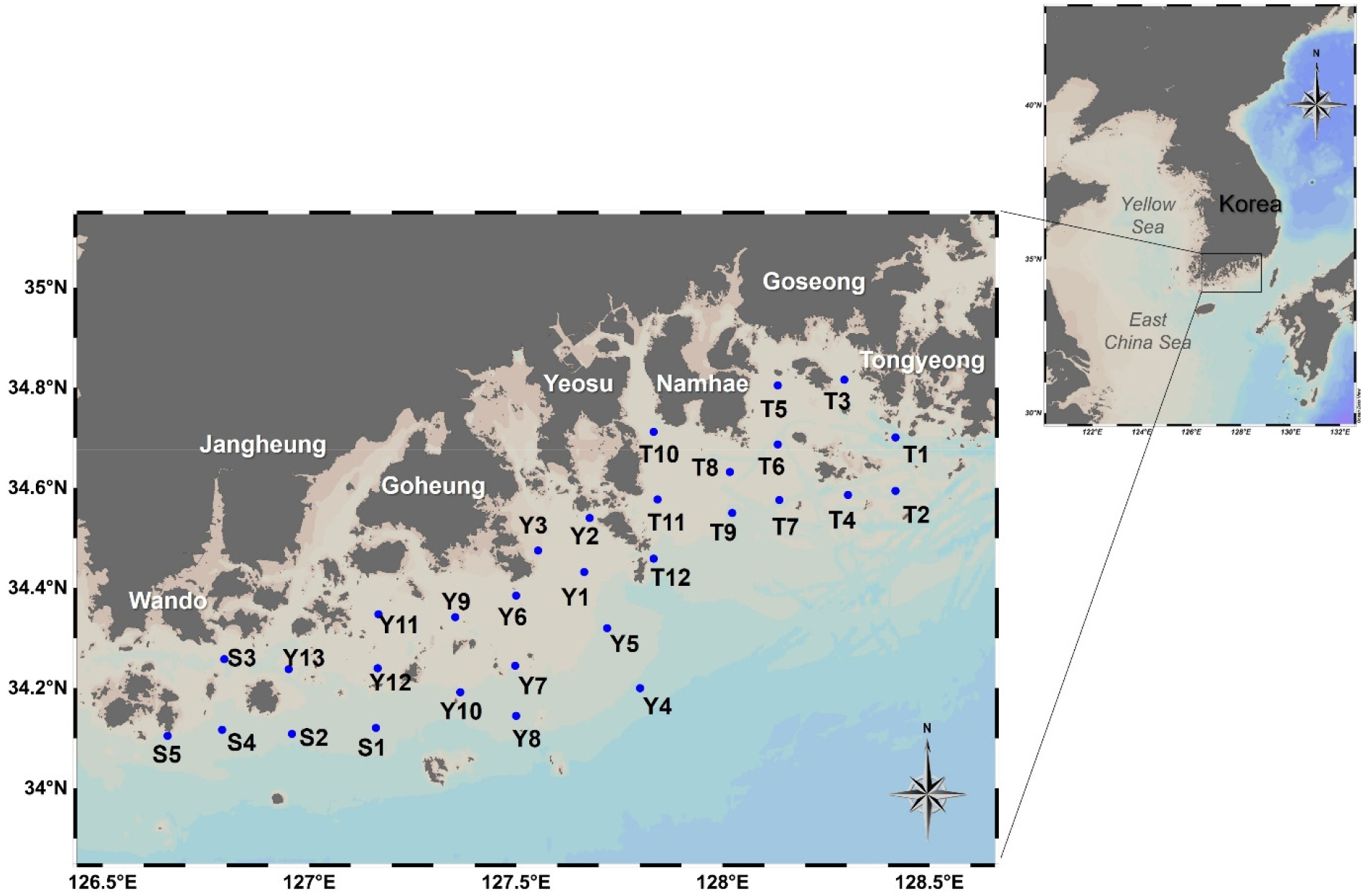
-
The Role of Urea as a Key Nitrogen Source Driving Phytoplankton Blooms in the Nitrogen-Limited South Coast of Korea
-
Article
- Fifty Years of the London Convention and Protocol: A Scientometric Review and Marine Environmental Governance Perspective
- Man-Deok Seo, Hye-won Jang, Chang‑Joon Kim
- Ocean-dumping research has been fragmented, with bibliometric reviews confined to single waste categories such as plastic litter and structural analyses encompassing broader …
- Ocean-dumping research has been fragmented, with bibliometric reviews confined to single waste categories such as plastic litter and structural analyses encompassing broader ocean dumping issues relatively lacking. Therefore, we present a comprehensive scientometric assessment of 865 articles published between 1953 and 2024 and indexed in the Web of Science Core Collection (Clarivate) that address ocean dumping within the governance framework of the London Convention and Protocol (LC/LP). Publication output, national and institutional productivity, co-authorship networks, and keyword co-occurrence patterns were analyzed to trace the thematic evolution, international collaboration, and the coupling of these factors with regulatory milestones. The findings revealed that scholarly output surged after each key LC/LP milestone, namely, the 1996 Protocol, 2006 carbon capture and storage (CCS) decision, and 2013 geoengineering amendment, and showed that every new domain (CCS and geoengineering) swiftly developed its own research cluster. Five dominant thematic clusters emerged: (i) pollutants in sediments; (ii) international conventions and regulatory policies; (iii) carbon capture and marine geoengineering; (iv) toxicity and ecological effects; and (v) hazardous military waste. Although output is dominated by developed nations (especially the United States and the United Kingdom), contributions are increasing from East Asia but remain underrepresented from equatorial and least-developed regions. Building on these results, we outline a concise indicator suite that includes research intensity, thematic diversity, and policy-coupling indices to support future LC/LP performance reviews. This evidence base highlights where scientific capacity and cross-domain integration should be strengthened, thereby informing more inclusive and adaptive marine-environment governance. - COLLAPSE
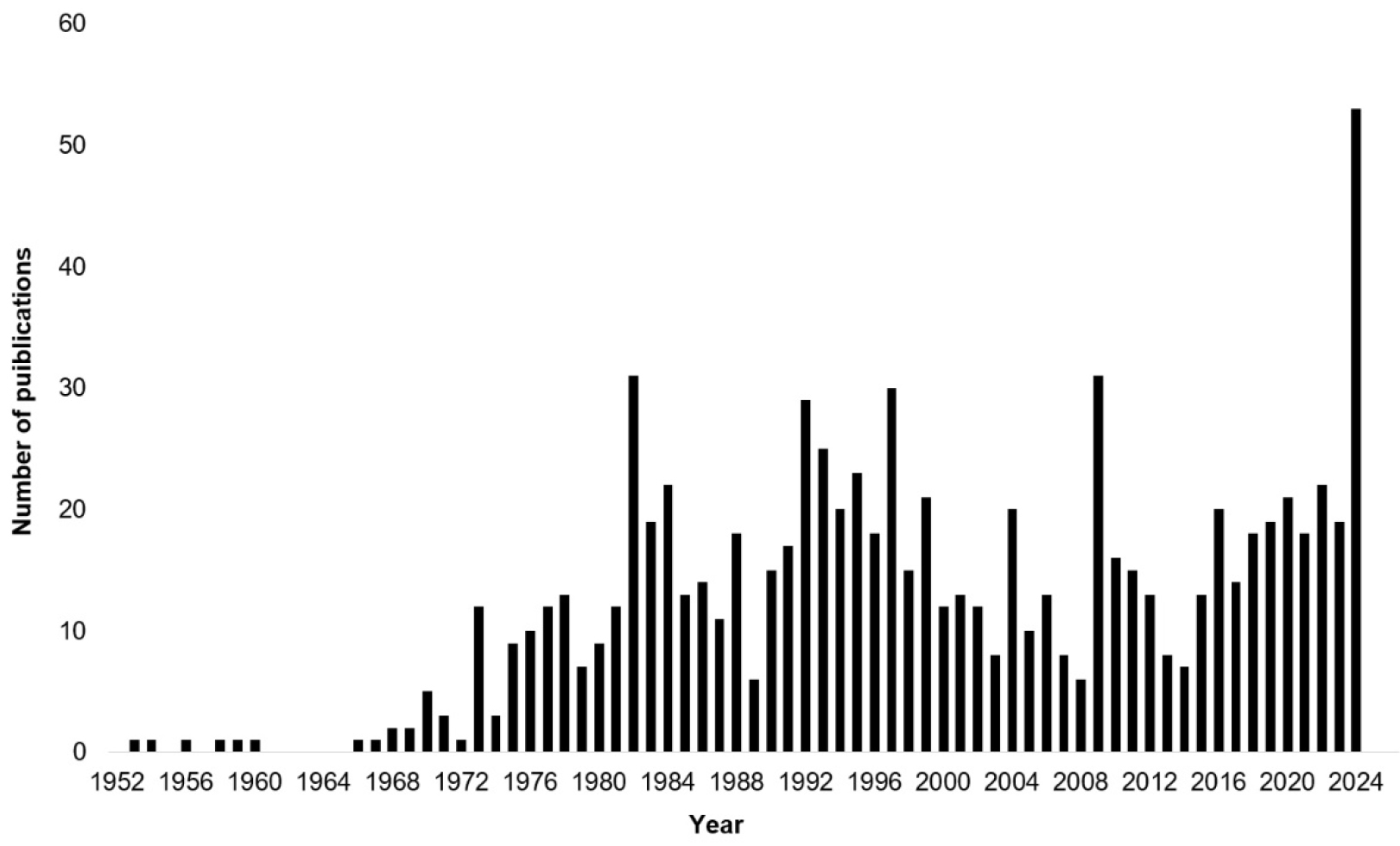
-
Article
-
Navigating Arctic Diplomacy under Trump 2.0: Strategic Directions for the New South Korean Administration
트럼프 2.0 시대의 북극 외교 전략: 한국 신정부의 전략적 방향 제언
-
Youngmin Seo
서영민
- This article examines how the second Trump administration is likely to reshape U.S. Arctic policy and assesses the implications for South Korea’s …
- This article examines how the second Trump administration is likely to reshape U.S. Arctic policy and assesses the implications for South Korea’s strategic positioning. I argue that Trump's “America First” approach will intensify security competition in the Arctic, undermine multilateral governance, and challenge the institutional resilience of the Arctic Council. In this volatile environment, South Korea must recalibrate its Arctic diplomacy. Drawing from science diplomacy, international law, and regional geopolitics, I propose a pragmatic strategy rooted in bilateral engagement, technological cooperation, and institutional innovation. I recommend Seoul expand scientific collaborations, leverage its maritime and shipbuilding expertise, and deepen selective cooperations with Arctic stakeholders, in particular Russia, while remaining committed to rule-based norms. South Korea must also enhance its leadership in regional forums such as Arctic Partnership Week and revive trilateral cooperation with China and Japan. By doing so, Korea can assert its relevance, safeguard its interests, and emerge as a credible middle-power actor in the evolving Arctic order. - COLLAPSE
-
Navigating Arctic Diplomacy under Trump 2.0: Strategic Directions for the New South Korean Administration
-
Article
-
A Study on the Improvement of the Marine Environment Improvement Charges System for the Discharge of Waste into the Ocean
해양환경 보전을 위한 해양환경개선부담금 제도 개선방안 연구
-
Jooah Lee, Seongwook Park, Kiyoung Choi, Hoon Lee
이주아, 박성욱, 최기영, 이훈
- In Korea, in order to manage marine waste, a direct cause of marine pollution, the principle of the polluter pays is applied …
- In Korea, in order to manage marine waste, a direct cause of marine pollution, the principle of the polluter pays is applied to impose and collect Marine Environmental Improvement Charges. The Marine Environmental Improvement Charge was introduced to curb the rapidly increasing marine discharge, driven by economic reasons that make marine disposal cheaper than onshore disposal, while pursuing a policy of prohibiting marine litter. The current criteria for calculating waste marine discharge and Marine Environmental Improvement Charges in Korea have remained unchanged for over 20 years since their implementation in 2001. To achieve the appropriate goals of marine environmental management and ensure rational operation and maintenance, it can be considered necessary to periodically review the suitability of the calculation criteria and evaluate the need for institutional improvements. In light of these considerations, this paper aims to review how waste marine discharge is managed domestically and internationally, analyze the current system for calculating Marine Environmental Improvement Charges, assess its appropriateness, and propose ways to improve the system by considering adjustments to Marine Environmental Improvement Charges. - COLLAPSE

-
A Study on the Improvement of the Marine Environment Improvement Charges System for the Discharge of Waste into the Ocean
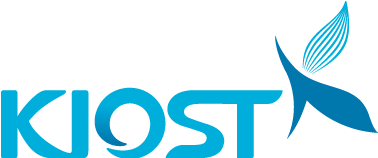


 Ocean and Polar Research
Ocean and Polar Research
